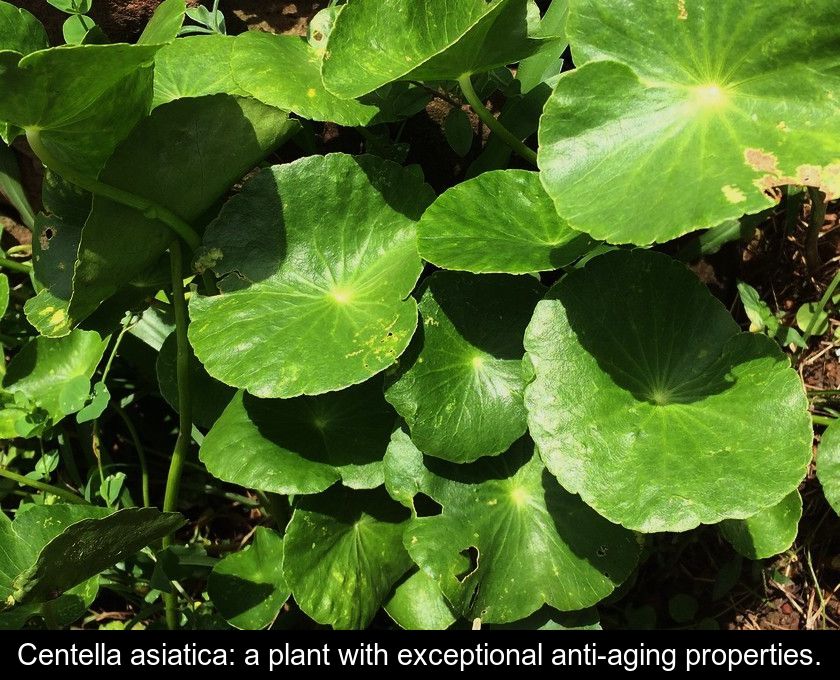Centella Asiatica: A Plant With Exceptional Anti-aging Properties.
New flagship asset in anti-aging cosmetics, Centella asiatica is a legendary plant in certain cultures. Even though this plant has been known in the beauty industry for several decades, its benefits for the skin continue to be rediscovered. Here's everything you need to know about this plant with amazing virtues.
1- She is known by different names.
In the cosmetics department, we find more and more creams and anti-aging treatments containing Centella asiatica.
This plant, which grows in Asia but also in Madagascar and Australia, has different names. It is nicknamed tiger grass, brahmi, gotu kola, or hydrocotyle because it is an aquatic plant.
2- It is widely used in traditional medicines.
While the Western cosmetic industry has been using this herbaceous plant for a few decades, Centella asiatica is a millennia-old remedy in other parts of the world.
It is used as a medicinal plant in traditional Chinese medicine and Indian Ayurvedic medicine.
In these traditional medicines, it is used to treat skin conditions and oral health issues. It is also used to strengthen blood vessel walls and improve blood circulation, and in a completely different field, to treat anxiety and nervousness.
In 2001, a team of British researchers demonstrated its effectiveness in treating varicose veins and chronic venous insufficiency.
3- Powerful active ingredients are contained in its leaves.
Centella asiatica is an annual herbaceous plant of the Apiaceae family. It is characterized by slender stems and green leaves with an oblong shape and a soft texture.
Its leaves are edible and can be consumed crushed, in salads, or as a herbal tea. They are traditionally used in the form of poultices for their soothing and healing properties.
In modern cosmetics, this plant is believed to have the ability to stimulate collagen production and skin renewal. These very interesting properties are linked to two types of active ingredients found in the leaves: madecassosides and asiaticosides.
4- It is a trendy ingredient in anti-aging cosmetics.
For a few years now, Centella asiatica has become a star ingredient in anti-aging cosmetics.
In the INCI list of cosmetic ingredients, which is the international reference nomenclature in this field, the active ingredients extracted from this plant can be designated by the following expressions:
• madecassic acid;
• asiaticoside;
• centella asiatica leaf;
• centella asiatica extract;
• centella asiatica water.
5- This plant fights against most signs of aging.
Because it possesses calming, anti-inflammatory, and healing properties, Centella asiatica acts against the majority of signs of aging.
Its richness in antioxidants allows it to fight against the harmful effects of oxidative stress related to sun exposure and to act in synergy with other antioxidant ingredients such as vitamin E, whose effectiveness it boosts.
Used topically on the face, this plant promotes the synthesis of collagen fibers and stimulates the renewal of epidermal cells. It has a beneficial effect on skin renewal, as well as on skin regulation and quality.
What's more, this plant presents no danger and no contraindication. It can be used safely by pregnant women and young children. Only very rare cases of allergy have been reported. It is therefore recommended to test this product on the inner elbow before applying it to the face.
6- She possesses many other virtues.
Well known in traditional Asian medicine, Centella asiatica is used to promote good healing and prevent the formation of a swollen keloid scar. It has even been used to heal the effects of leprosy and has been the subject of numerous studies in Madagascar since the 1940s.
More generally, this soothing and healing plant is very beneficial for the skin. It calms various skin inflammations, whether it's a burn, juvenile acne, or another skin problem like psoriasis or eczema.
Finally, thanks to its action on microcirculation, this plant helps reduce dark circles and treat visible small blood vessels on the face in case of rosacea or other redness. In summary, its reputation as a miracle plant for skin beauty is well deserved!











